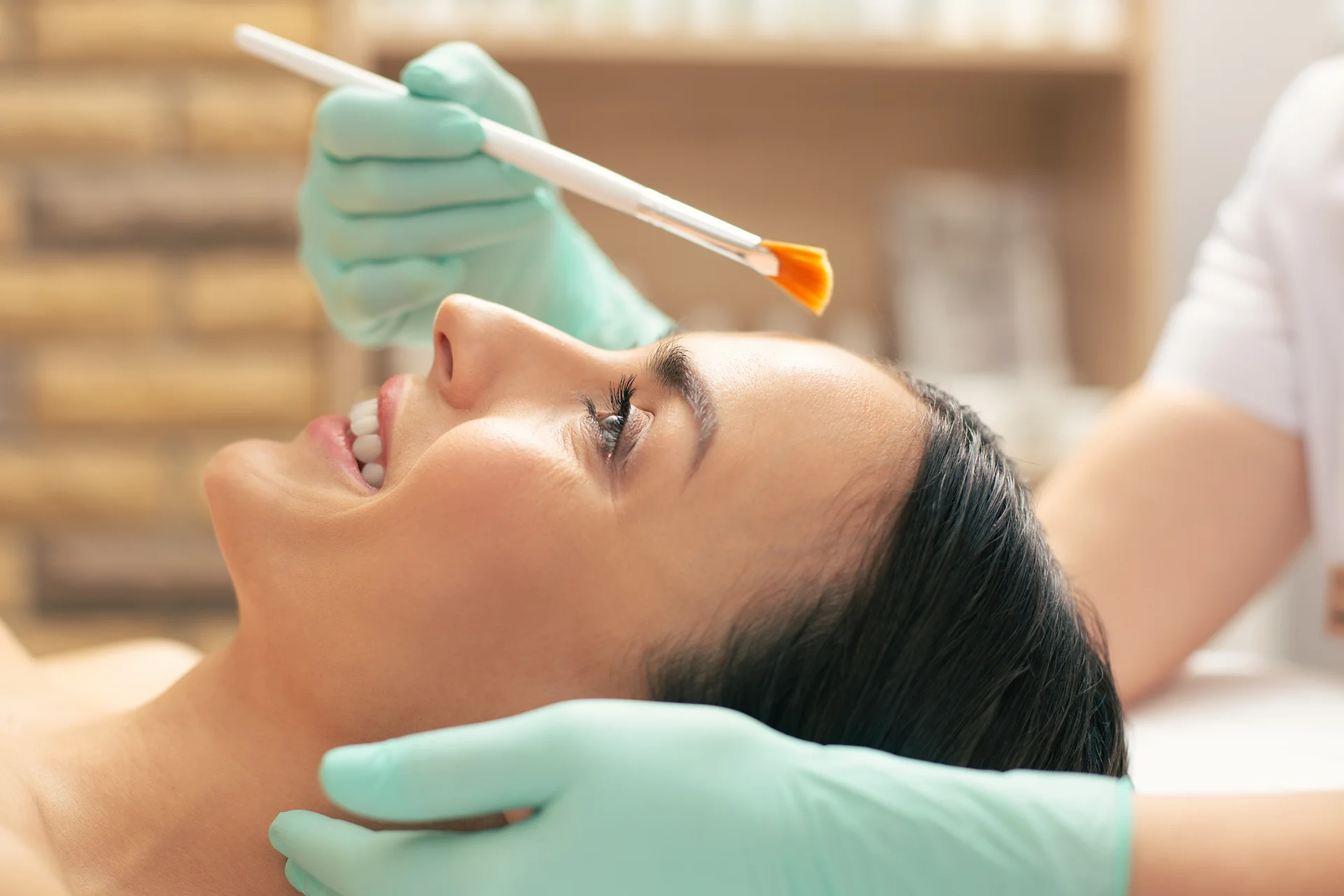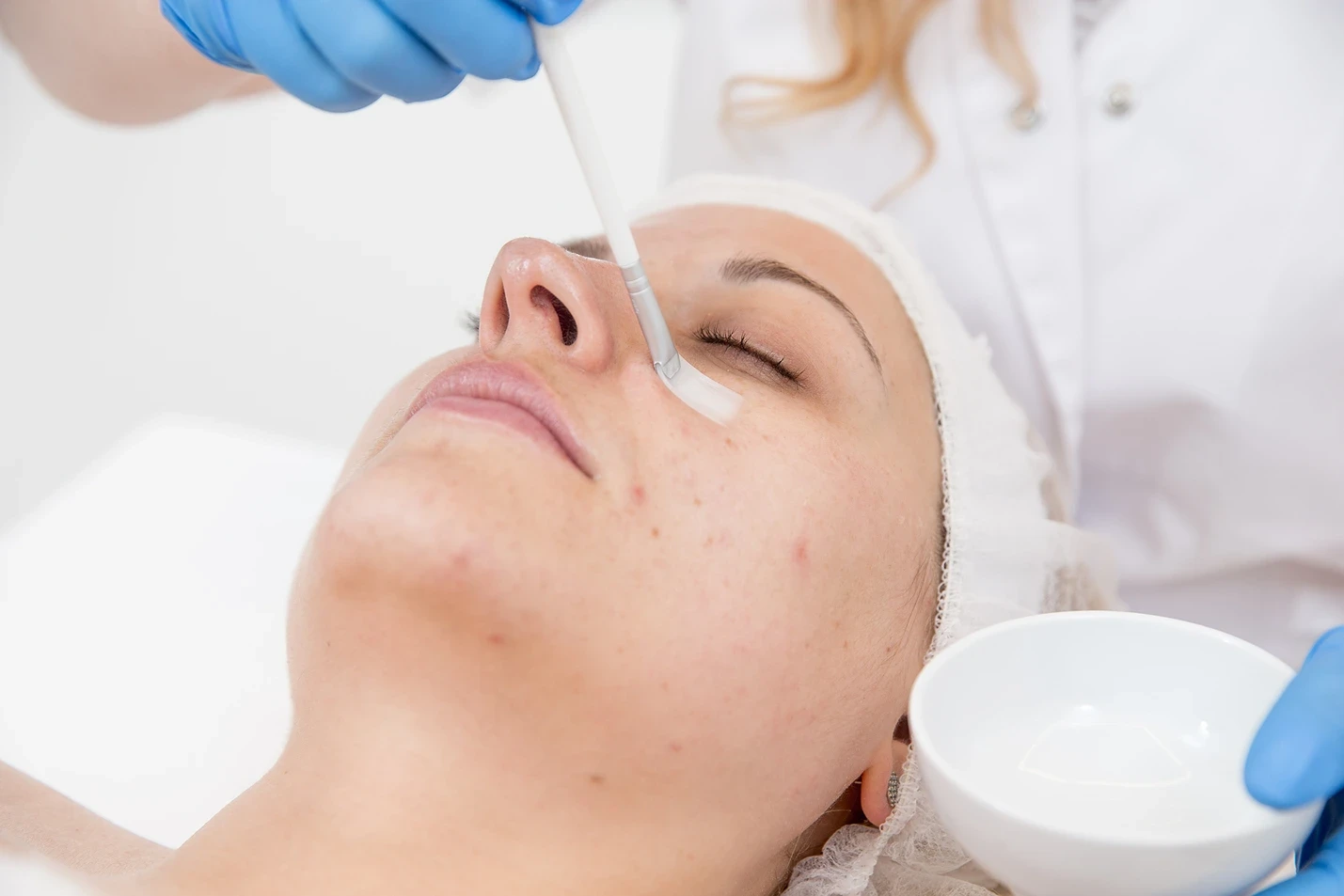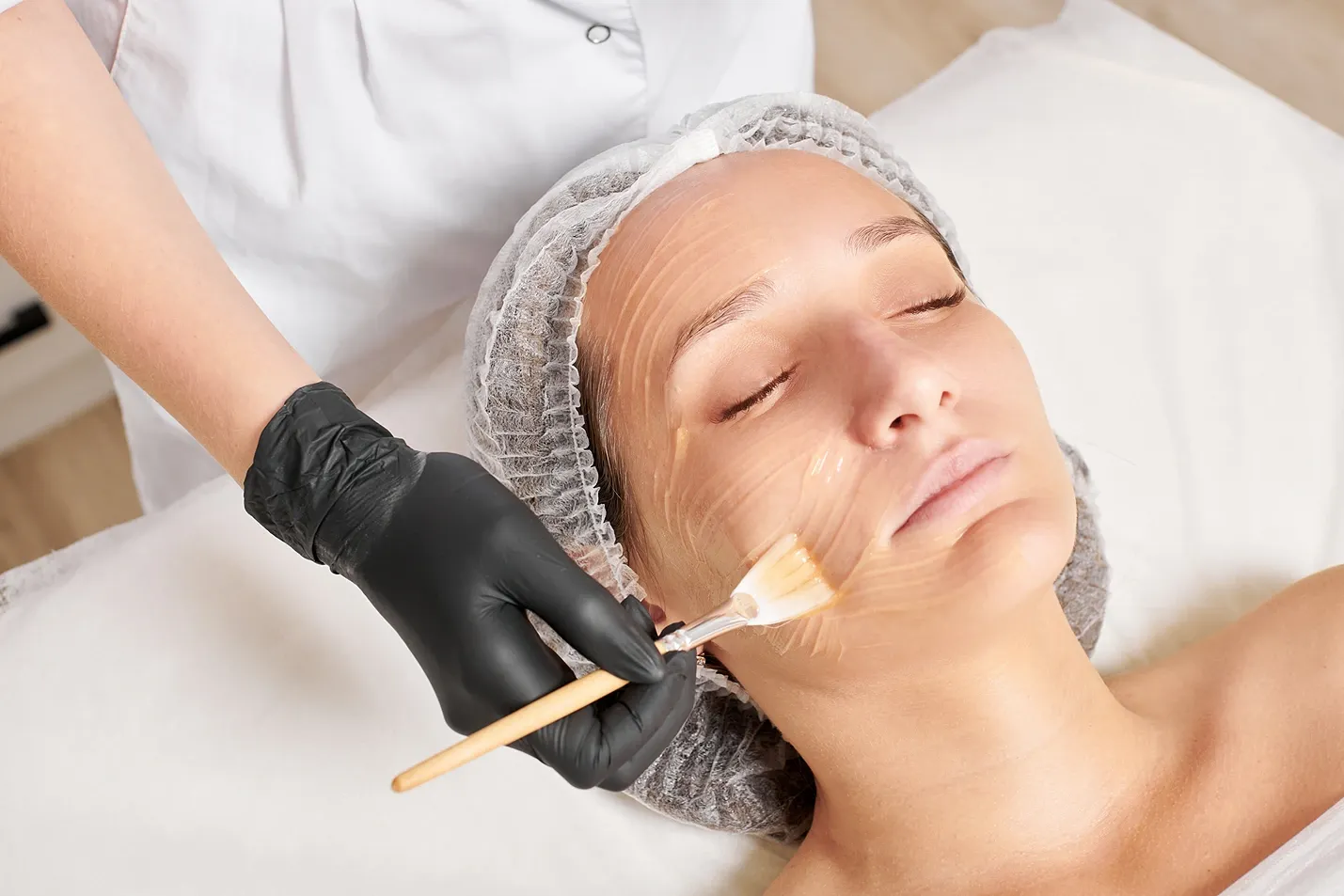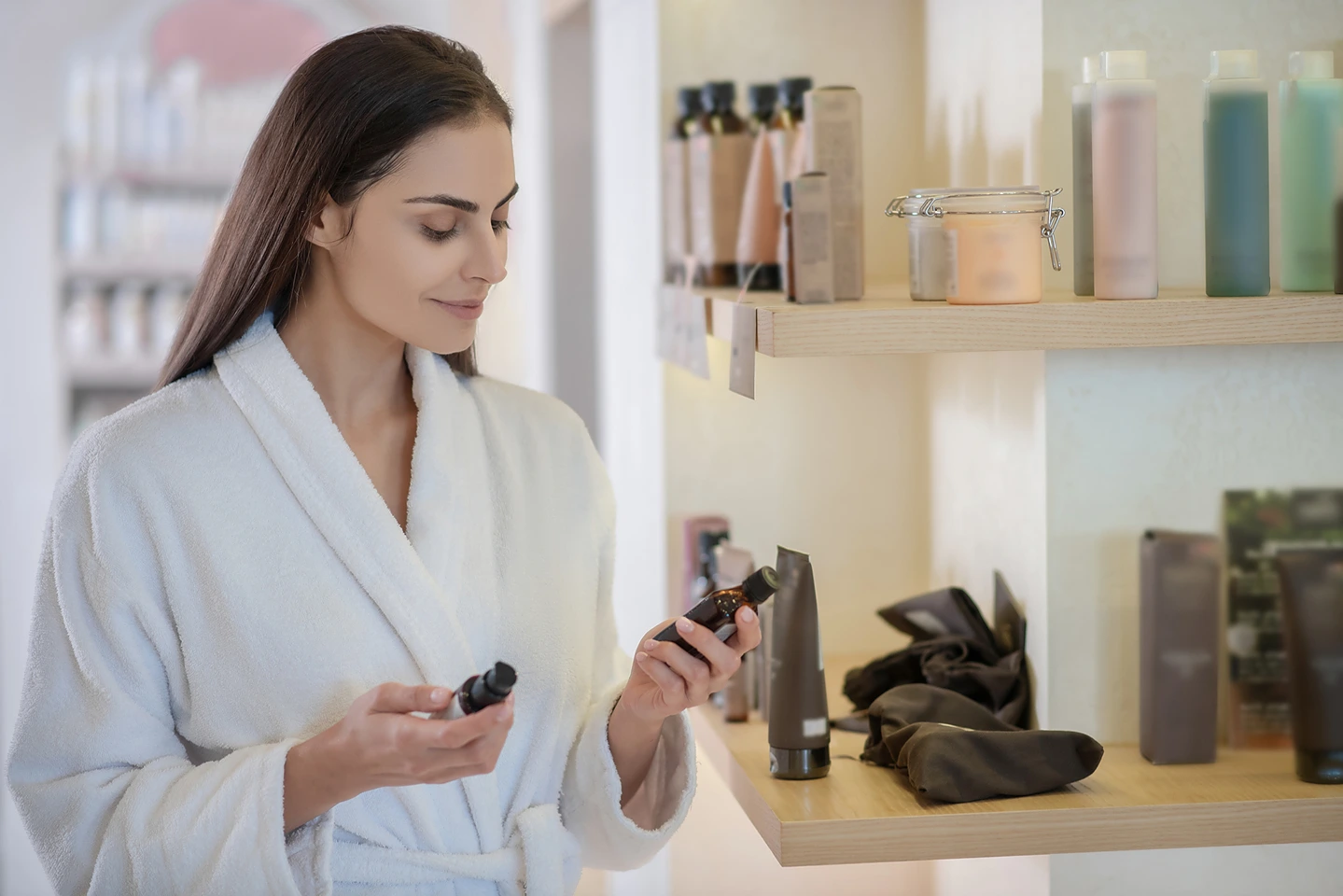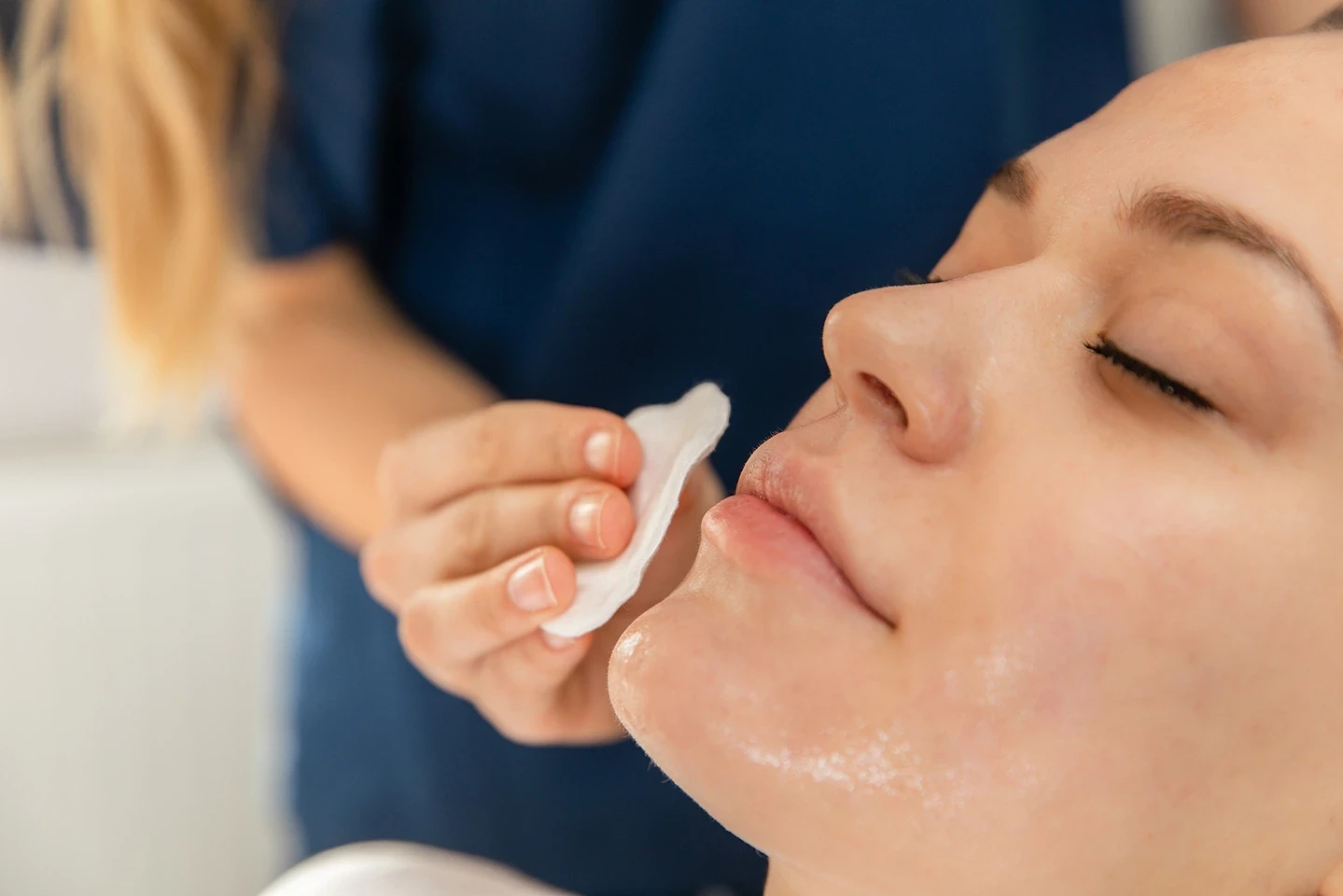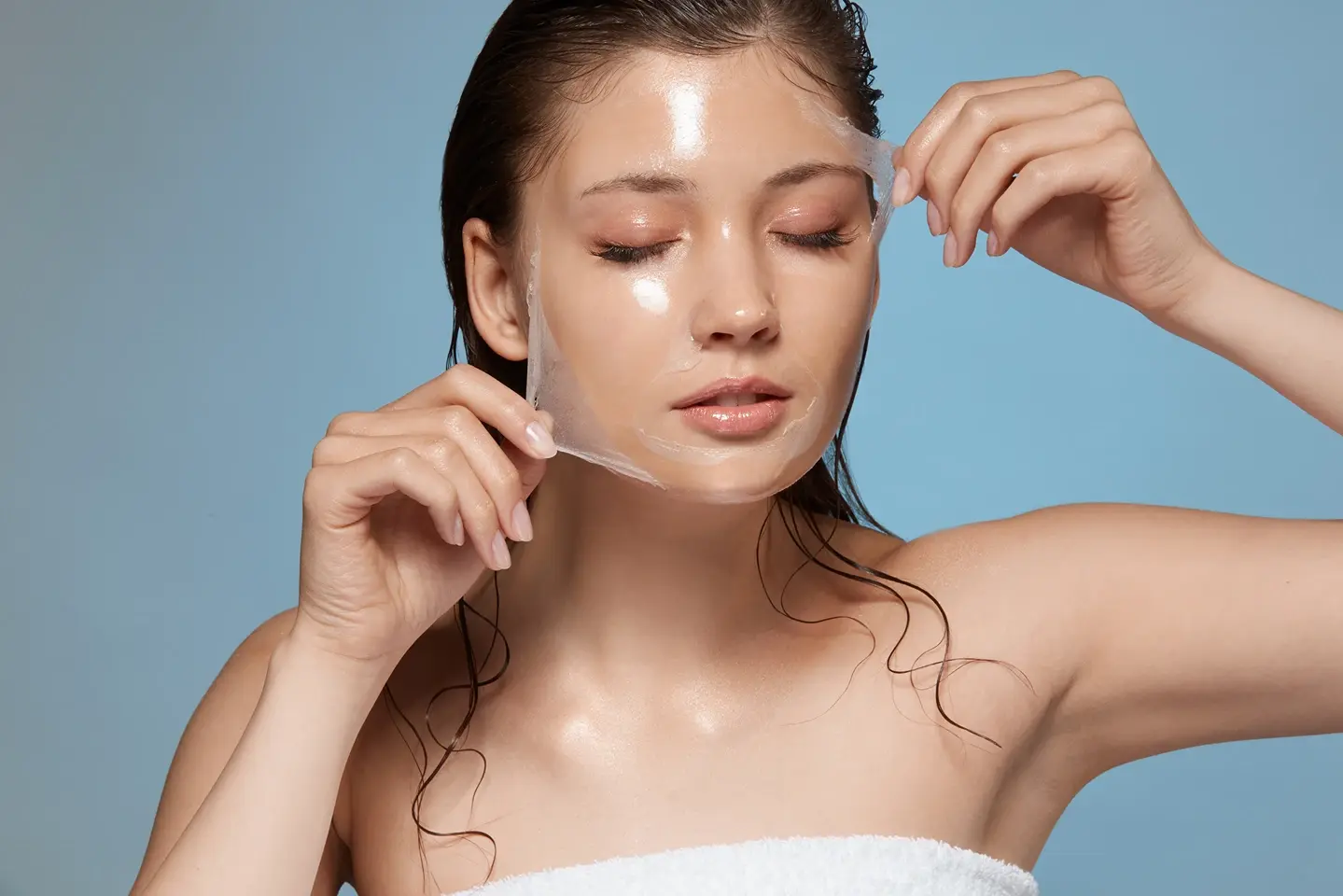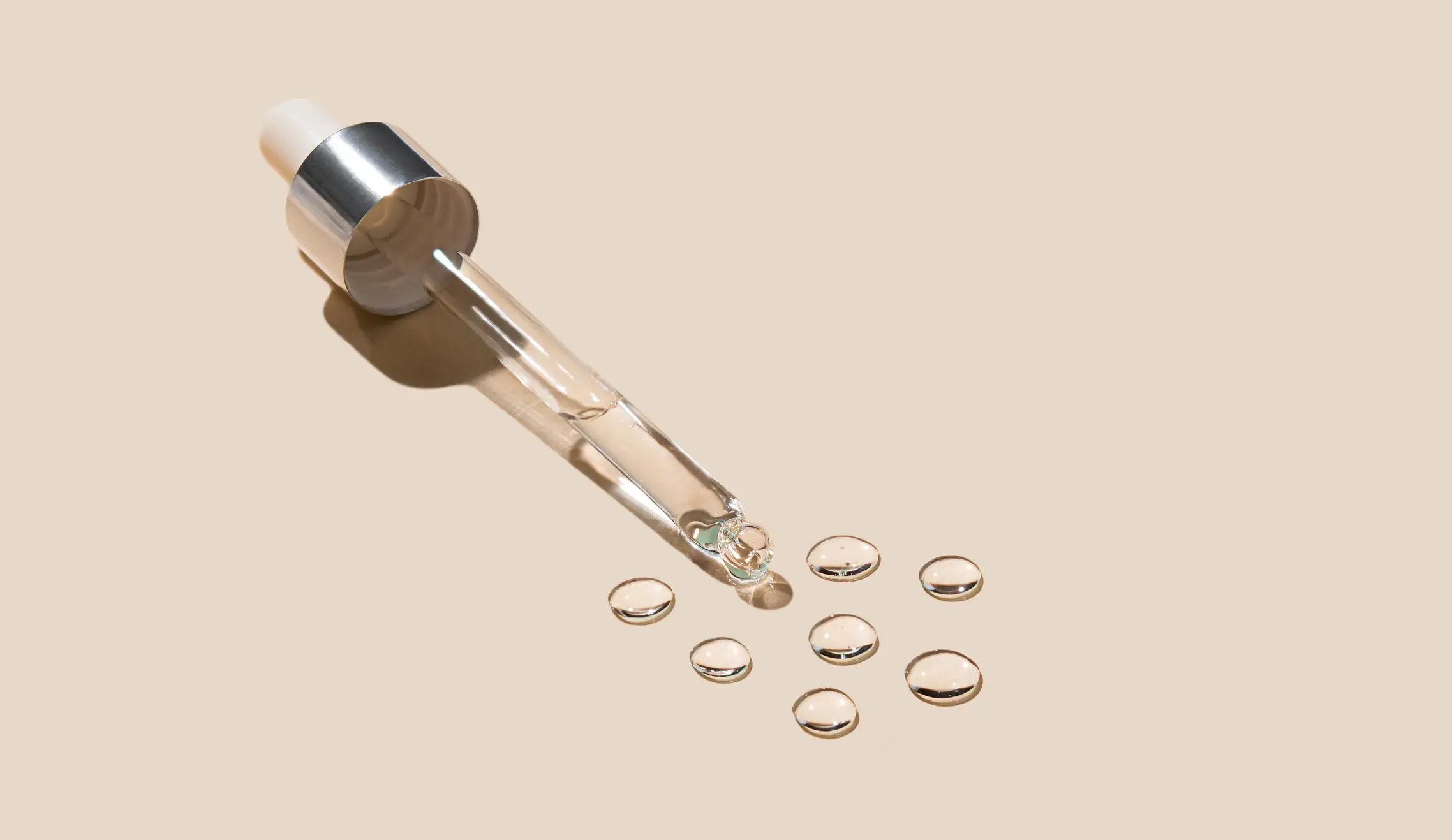Understanding the Different Types of Chemical Peels, Procedures, Benefits, and Finding the Right Provider
A professional chemical peel is a skin treatment done by experts. A chemical solution is applied to remove damaged outer layers of skin, which makes the skin look smoother and younger.
Smooth, glowing, youthful skin—who doesn’t want it? Yet no matter how religiously we cleanse, tone, and moisturize, the slow march of time and environmental damage inevitably takes its toll. Our complexions become dull, uneven, and marred by fine lines, wrinkles, and hyperpigmentation.
We slather on serums, creams, and lotions that promise miracles, only to be disappointed. Is there another way? Yes, say dermatologists, estheticians, and plastic surgeons: professional chemical peels.
Chemical peels harness the power of fruit acids and other exfoliating agents to reveal fresher, younger-looking skin by literally peeling away damaged outer layers. Unlike scrubs and at-home peels, professional treatments penetrate deeper to stimulate collagen production and cell turnover for more dramatic improvements.
From gentle lunchtime refreshes to medical-grade procedures, customized chemical peels can target everything from acne, scars, and sun damage to deep wrinkles. Are you ready to uncover your best skin ever? This comprehensive guide will tell you everything you need to know.
What are Chemical Peels?
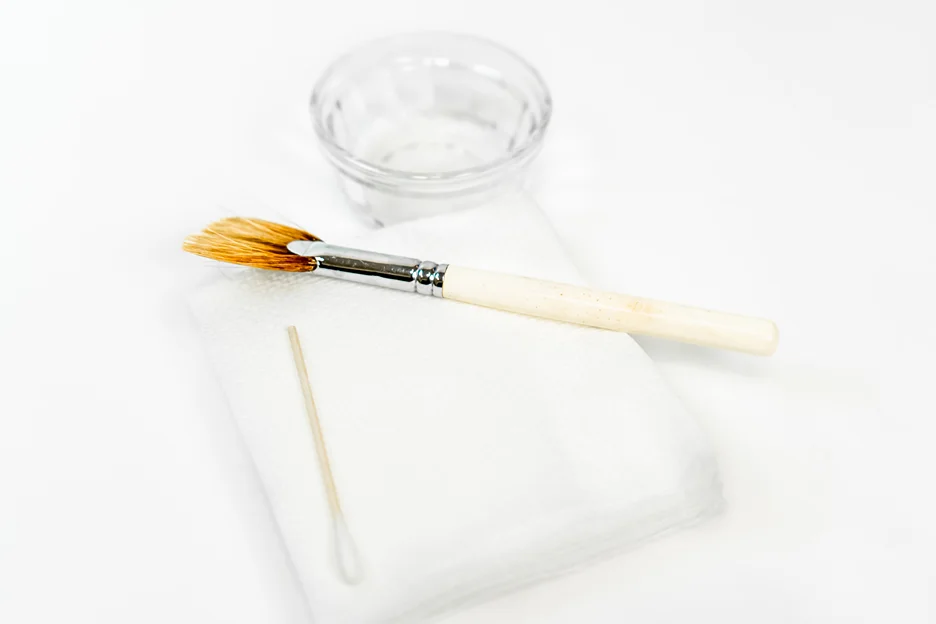
A chemical peel is a skin treatment that uses a chemical solution to remove the top layers of skin. The solution causes gentle controlled damage to the skin, prompting the growth of new smoother skin for an improved appearance. Chemical peels can reduce the appearance of fine lines, wrinkles, acne scars, and other skin blemishes.
Chemical peels provide a range of benefits, including:
- Improving the appearance of fine lines and wrinkles
- Reducing acne scars and other skin imperfections
- Diminishing hyperpigmentation and sun damage
- Smoothing skin texture for a more even complexion
- Clearing clogged pores and reducing breakouts
- Boosting collagen production for firmer and plumper skin
Chemical peels can treat mild to moderate skin concerns on the face, neck, chest and hands. When performed by an experienced dermatologist or licensed esthetician, chemical peels are safe, customized treatments that produce dramatic results with little downtime.
Banish wrinkles, scars and dull skin – book your personalized chemical peel consultation at CosMedic LaserMD today
Types of Chemical Peels
There are three main categories of chemical peels based on their depth and level of penetration:
Light Chemical Peels
Light peels, also known as lunchtime peels, use mild acids to exfoliate the outermost layer of the epidermis. Common solutions used include:
- Alpha hydroxy acids (AHAs) like glycolic acid or lactic acid: These provide gentle exfoliation and are ideal for treating fine lines, surface pigmentation, dullness and clogged pores.
- Salicylic acid: A beta hydroxy acid (BHA) that penetrates oil-clogged pores making it effective for acne-prone skin and blackheads.
- Enzyme peels: Uses fruit enzymes like papaya or pineapple which gently loosen the superficial layer of skin.
Light peels have minimal downtime, require no anesthetic, and take 10-30 minutes to perform. Skin may temporarily feel warm with mild stinging during application. Mild redness, flaking and dryness may persist for up to a week.Visible results are subtle and repeated treatments are recommended every 2-4 weeks.
Medium Chemical Peels
Medium-depth peels use stronger concentrations of acids and penetrate the epidermis and upper part of the dermis. Common solutions include:
- TCA (trichloroacetic acid): A cosmetic-grade TCA formulated between 10-30% can treat pigmentation, smoothen moderate wrinkles, and deeply exfoliate.
- Jessner’s peel: Contains salicylic acid, lactic acid and resorcinol for acne scars and skin imperfections.
- Glycolic acid peels above 30%: Provide enhanced rejuvenation for dull, aged skin.
Numbing cream is applied before the procedure. Some stinging and burning sensations are expected during application. Downtime is around 7-14 days with peeling and significant redness in the first week.
Overall these peels require 3-7 days of recovery time at home before normal activities can be resumed. Approximately 6 treatments are needed spaced 3-4 weeks apart for optimal results.
Deep Chemical Peels
Deep chemical peels use the strongest chemical solutions to penetrate into the mid-dermis. They include:
- Phenol peels: Very potent with extended downtime of 2-3 weeks. Best for severely sun damaged and wrinkled skin.
- 80%+ Glycolic acid peels: Provide dramatic improvements in pigmentation and deep wrinkles.
- High-concentration TCA peels: TCA above 35% can markedly resurface skin texture and tone.
Local anesthesia, IV sedation or general anesthesia is administered before the procedure. Deep peels have the most intense “burning” sensation during application. For the first 7-14 days, the skin will be extremely red and swollen with weeping and crusting.
Complete healing takes up to 3 months. Patients must commit to strict aftercare and spend 2-3 weeks recovering indoors. Although the downtime is significant, just one peel can deliver transformative results in pigmentation and wrinkles that last several years.
At-Home vs. Professional Chemical Peels
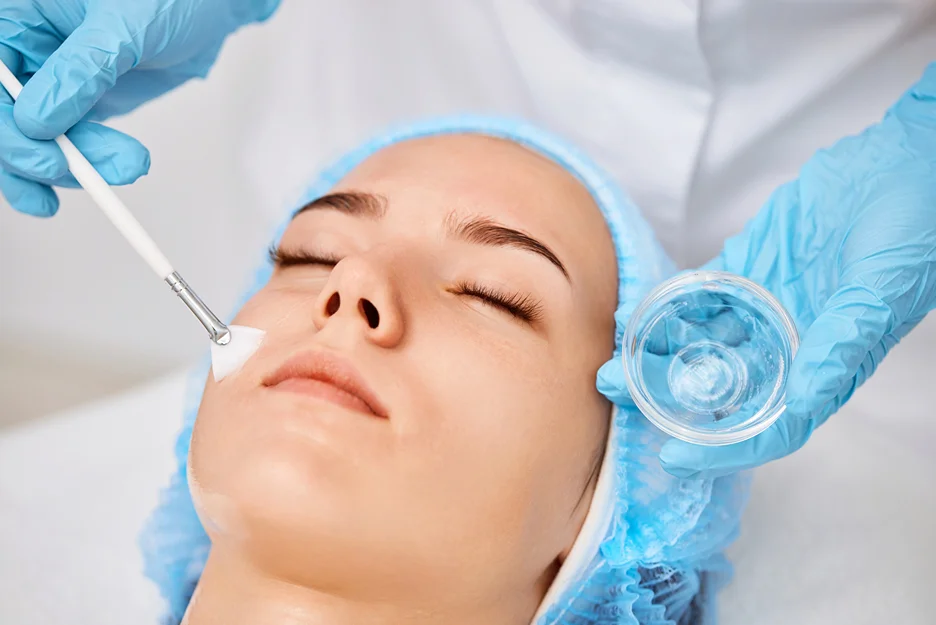
Chemical peels come in two main forms: professional-grade peels performed in a medical setting and lower-concentration at-home peels for self-application. While both use exfoliating acids to improve skin texture, there are some important distinctions between these two types of treatments.
| Factor | Professional Peels | At-Home Peels |
| Ingredient Strength | Use higher, prescription-strength concentrations of AHAs and BHAs | Contain lower concentrations of AHAs and BHAs |
| Depth of Penetration | Reach the dermis or middle layer of skin | Only reach the epidermis or outer layer of skin |
| Supervision | Administered by licensed dermatologists or aestheticians | Self-applied without medical supervision |
| Potential Side Effects | Higher risk of severe side effects like prolonged redness, swelling, peeling, scarring | Milder side effects like temporary irritation and redness |
| Results | More dramatic improvements in skin appearance and concerns like acne scarring, fine lines, hyperpigmentation | More subtle improvements in skin tone and texture |
| Who Should Consider | Those seeking major changes in skin appearance who are willing to accept stronger side effects | Those wanting gradual improvement over time with minimal risks |
Don’t settle for subtle improvements – let the pros at CosMedic LaserMD dramatically transform your skin with medical-grade chemical peels
Who is a Good Candidate for a Professional Chemical Peel?
The ideal chemical peel candidate has certain characteristics that make them likely to achieve good results from the procedure. These include:
- Fair to light skin tones: Those with darker skin are at higher risk of post-inflammatory hyperpigmentation after a peel. The trauma of the peeling process can trigger excess melanin production in darker skin.
- Minimal active acne: Those with severe active acne are not ideal candidates. The peeling process can further irritate already inflamed skin and trigger breakouts. Mild acne is acceptable.
- No history of keloid scarring: Those prone to keloid scars are at risk of the scarring becoming worse with the trauma of peeling. The peel may damage the skin and trigger an aggressive healing response.
- Realistic expectations: Chemical peels improve skin texture, tone, and radiance, and may reduce fine lines, acne scars, and discoloration. However, they will not completely remove deeper imperfections.
- Ability and commitment to sun protection: Chemical peels make the skin highly photosensitive. UV exposure during healing can lead to permanent pigmentation problems. Patients must be diligent about sunscreen and sun avoidance.
While chemical peels can benefit many people, there are certain individuals who are poor candidates. Peels may be risky or lead to poor outcomes in those with:
- Active cold sores, warts, or other viral infections
- Severely dry, irritated skin
- Recent use of isotretinoin (Accutane)
- History of autoimmune disorders like lupus or rheumatoid arthritis
- Known allergies to any of the ingredients in the peel solutions
The Chemical Peel Procedure
The initial consultation is critical for assessing the skin, setting expectations, choosing a peel type and depth, and reviewing risks.
A medical history, skin evaluation, and discussion of goals are conducted. To maximize benefits and safety, the provider may recommend pre-conditioning the skin for 2-4 weeks with retinoids, hydroquinone, or alpha hydroxy acids.
On the day of the peel:
- The face is thoroughly cleansed to remove oils and debris.
- For medium and deep peels, a topical or injectable local anesthetic is applied to numb the skin.
- The chemical solution is applied to the treatment areas using gauze, a brush, cotton-tip applicators or the provider’s gloved hands. Light peels involve one quick application; medium and deep peels require several coats over 30-60 minutes. A stinging or burning sensation is expected.
- The peel solution is left on for the prescribed time to achieve desired penetration. For light peels, it’s neutralized and rinsed off after a few minutes while medium and deep peels require longer application times.
- Post-peel soothing creams and SPF are applied and home aftercare instructions are provided.
Aftercare for Chemical Peels

Proper aftercare can significantly impact the results and reduce side effects like scarring or pigmentation. Post-peel care involves:
- Moisturize regularly with a lightweight, fragrance-free moisturizer to keep skin hydrated. Apply moisturizer multiple times per day.
- Avoid picking or pulling at peeling skin. Let the skin shed naturally over 2-7 days.
- Use cool or cold water when cleansing to avoid irritation from warm or hot water.
- Apply broad-spectrum SPF 30+ sunscreen daily to protect sensitive post-peel skin from UV damage.
- Consider using a retinoid cream like tretinoin for a few weeks pre and post-peel as recommended by your dermatologist to enhance results.
- Avoid irritants like harsh products, scrubs, exfoliants, retinoids, alpha hydroxy acids until healing is complete.
- Check in with your provider if any signs of infection arise during the healing process.
- Use cold compresses and topical hydrocortisone as needed for stinging, itching, and discomfort.
- Look for camouflaging makeup with soothing ingredients like aloe vera once peeling is complete.
Adherence to aftercare limits side effects and helps sustain results. Most providers recommend a professional follow-up 3-7 days post-procedure to assess healing.
Get the specialized post-procedure care essential for beautiful chemical peel results from CosMedic LaserMD
How to Find a Qualified Professional for Your Chemical Peel
It’s critical to have your chemical peel performed by an expert provider to ensure the best results and safety. Always verify credentials:
- Seek out a board-certified dermatologist or plastic surgeon. Their extensive training and expertise in chemical peels means they can best assess your needs and recommend appropriate treatments.
- Confirm the provider has certification in chemical peel procedures. Many dermatologists and estheticians pursue specialized training to demonstrate peel competency.
- Ask about their experience level with chemical peels. More regular experience means greater familiarity and skill in customizing treatments and handling complications.
- Inquire about the types of peels offered and their recommendations for your skin goals. Trustworthy professionals will tailor the peel to your individual skin type and condition.
- Look for use of high-quality professional peel products from reputable brands. Avoid providers using subpar or DIY peel solutions.
Reputable, trustworthy providers emphasize realistic results, safety, and appropriate peel selection for each individual. Do your due diligence to find a qualified chemical peel specialist for the best possible outcome.
Discover Your Best Skin Ever at CosMedic LaserMD

CosMedic LaserMD board-certified dermatology experts specialize in customized chemical peels to revitalize your complexion. With thousands of successful peels performed each year, we offer unparalleled experience, safety and results.
Schedule your free consultation today to learn which professional-grade peel can target your skin concerns from wrinkles and scars to uneven tone and texture. Together we’ll create a personalized skin rejuvenation plan tailored to your needs, lifestyle and goals.

